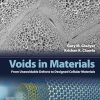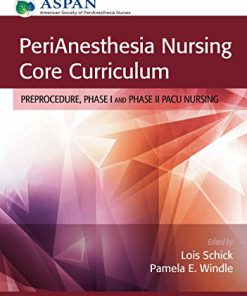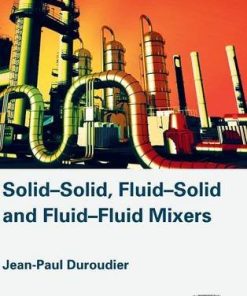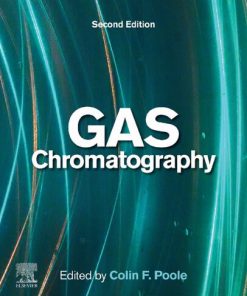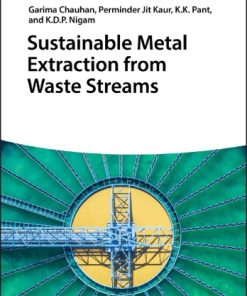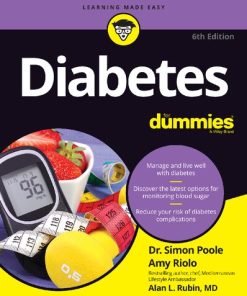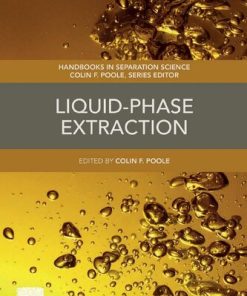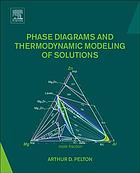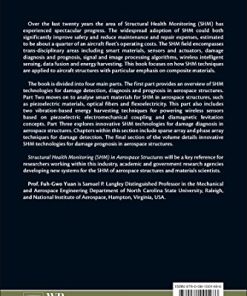(Ebook PDF) Solid phase Extraction 1st edition by Colin Poole 0128169079 9780128169070 full chapters
$50.00 Original price was: $50.00.$25.00Current price is: $25.00.
Solid-phase Extraction 1st edition by Colin F. Poole – Ebook PDF Instant Download/DeliveryISBN: 0128169079, 9780128169070
Full download Solid-phase Extraction 1st edition after payment
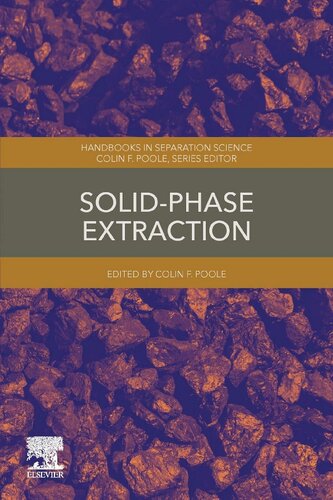
Product details:
ISBN-10 : 0128169079
ISBN-13 : 9780128169070
Author: Colin Poole
Solid Phase Extraction thoroughly presents both new and historic techniques for dealing with solid phase extraction. It provides all information laboratory scientists need for choosing and utilizing suitable sample preparation procedures for any kind of sample. In addition, the book showcases the contemporary uses of sample preparation techniques in the most important industrial and academic project environments, including solid-phase Microextraction, molecularly imprinted polymers, magnetic nanoparticles, and more. Written by recognized experts in their respective fields, this one-stop reference is ideal for those who need to know which technique to choose for solid phase extraction.
Solid-phase Extraction 1st Table of contents:
1. Core concepts and milestones in the development of solid-phase extraction
1.1. Introduction
1.2. First generation formats
1.3. Second generation formats
1.4. Sorbent chemistries and properties
1.5. Theoretical contributions to modeling sample processing conditions for cartridge and disk devices
1.6. Conclusions
2. Inorganic oxide and chemically bonded sorbents
2.1. Introduction
2.2. Inorganic oxide sorbents
2.3. Evaluation of formats, sorbent types, and modes of interaction
2.4. Sorbent characterization techniques
2.5. Conclusions
3. Porous polymer sorbents
3.1. Introduction
3.2. Hydrophobic porous polymers
3.3. Hydrophylic porous polymers
3.4. Mixed-mode ion-exchange polymers
3.5. Conclusions
4. Carbon-based adsorbents
4.1. Introduction
4.2. Carbon-based adsorbent for solid- phase extraction
4.3. Conclusions
5. Restricted access media
5.1. Introduction
5.2. Restricted access media
5.3. RAM sorbents interfaced with LC systems
5.4. Conclusion and future challenges
6. Aptamer-based and immunosorbents
6.1. Introduction
6.2. Grafting of antibodies and aptamers on a solid support
6.3. Extraction procedure using IS and OS
6.4. Various extraction format and methods
6.5. Capacity
6.6. Contribution in the selectivity of the OS/IS and control of nonspecific interactions
6.7. Specificity toward structural analogs
6.8. Reusability, regeneration
6.9. Conclusion
7. Metal-selective sorbents
7.1. Introduction
7.2. Sorbents for sequestering metal ions from aqueous solutions
7.3. Conclusions
8. Molecularly imprinted polymers
8.1. Introduction
8.2. Preparation of molecularly imprinted polymers
8.3. Molecularly imprinted solid-phase extraction (MISPE)
8.4. Selected applications
8.5. Conclusions
9. Magnetic nanoparticle sorbents
9.1. Introduction
9.2. Preparation techniques
9.3. Characterization methods
9.4. Magnetic carbon materials
9.5. Magnetic metal and metal oxides
9.6. Magnetic metal-organic frameworks
9.7. Magnetic porous organic polymers
9.8. Others magnetic nanoparticle sorbents
10. Metal-organic frameworks
10.1. Introduction
10.2. IRMOF in solid-phase extraction
10.3. MIL in solid-phase extraction
10.4. ZIF in solid-phase extraction
10.5. UiO in solid-phase extraction
10.6. Conclusions
11. Electrospun nanofibers
11.1. Introduction
11.2. Electrospinning process
11.3. Characterization of electrospun nanofibers
11.4. Electrospun nanofibers types
12. Particle loaded membranes
12.1. Introduction
12.2. Membranes modified with nanoparticles
12.3. Particle-loaded membranes in a thin film microextraction format
12.4. Conclusions
13. Fabric phase sorptive extraction: a new genration, green sample preparation approach
13.1. Introduction
13.2. Building blocks of fabric phase sorptive extraction membranes and their role in extraction
13.3. Preparation of sol-gel sorbent coated fabric phase sorptive extraction membranes
13.4. Sol-gel sorbents for fabric phase sorptive extraction
13.5. Characterization of fabric phase sorptive extraction membranes
13.6. Working principle of fabric phase sorptive extraction
13.7. Fabric phase sorptive extraction protocol
13.8. Fabric phase sorptive extraction method development
13.9. Advantages of fabric phase sorptive extraction over conventional sorbent-based sample preparation techniques
13.10. Different implementations of fabric phase sorptive extraction
13.11. Applications of fabric phase sorptive extraction
13.12. Conclusions
14. In-tube solid-phase microextraction
14.1. Introduction
14.2. Theoretical considerations
14.3. Preparation of designed capillary columns
14.4. Online coupling to liquid chromatography
14.5. Off-line development
14.6. Applications
14.7. Conclusions
15. Needle extraction device
15.1. Introduction
15.2. Construction of a needle extraction device
15.3. Determination of VOC in gas samples
15.4. Determination of VOCs in water samples
15.5. Conclusions
16. Micro-solid-phase extraction
16.1. Introduction
16.2. Sorbents used in μ-SPE
16.3. Enhanced μ-SPE: Combination with other microextraction procedures
16.4. Conclusion and future trends
17. Microextraction by packed sorbent (MEPS) and monolithic packed pipette tips for 96-well plates
17.1. Introduction
17.2. Microextraction by packed sorbent (MEPS)
17.3. Monolithic packed 96-tips
17.4. Concluding remarks
18. Stir-bar sorptive extraction
18.1. Theory of stir-bar sorptive extraction
18.2. Method development
18.3. Calibration and method validation
18.4. Application of stir-bar sorptive extraction
18.5. Conclusions
19. Matrix solid phase dispersion
19.1. Introduction
19.2. General procedure, traditional sorbents, and new materials
19.3. Extraction of natural components of plants and fruits by MSPD
19.4. MSPD methods for the extraction of contaminants from different matrices
19.5. Conclusion
20. Solid-phase analytical derivatizations
20.1. Introduction
20.2. Solid-phase analytical derivatizations
20.3. Solid-phase analytical derivatization of organic acids
20.4. Solid-phase analytical derivatization of aldehydes and ketones
20.5. Solid-phase analytical derivatization of amines
20.6. Conclusions
21. Automated and high-throughput extraction approaches
21.1. Introduction
21.2. Evolution of automated SPE approaches toward high-throughput sample extraction
21.3. Conclusions
22. Design of experiments and method development
22.1. Introduction
22.2. Methodology of design of experiments
22.3. Conclusions
23. Environmental applications (water)
23.1. Introduction
23.2. Volatile compounds
23.3. Hydrophobic compounds
23.4. Moderately polar compounds
23.5. Highly polar compounds
24. Environmental applications (air)
24.1. Solid phases for air environmental applications
24.2. Environmental applications
24.3. Conclusions
25. Solid-phase extraction in bioanalytical applications
25.1. Introduction
25.2. Conventional SPE approches in bioanalytical application
25.3. High throughput sample analysis using 96-well SPE microplates in bioanalytical applications
25.4. Microextraction by packed sorbents (MEPS) in bioanalytical applications
25.5. General conclusions and future perspectives
People also search for Solid-phase Extraction 1st:
dispersive solid phase extraction
application of solid phase extraction
types of solid phase extraction
advantages of solid phase extraction
magnetic solid phase extraction
Tags:
Solid phase,Extraction,Colin Poole,historic techniques,phase extraction
You may also like…
Uncategorized
Science (General)
Science (General)
Medicine - Diabetes
(Ebook PDF) Diabetes For Dummies 6th Edition by Simon Poole 111991258X 978-1119912583 full chapters
Politics & Philosophy - Government & Politics
Earth Sciences



